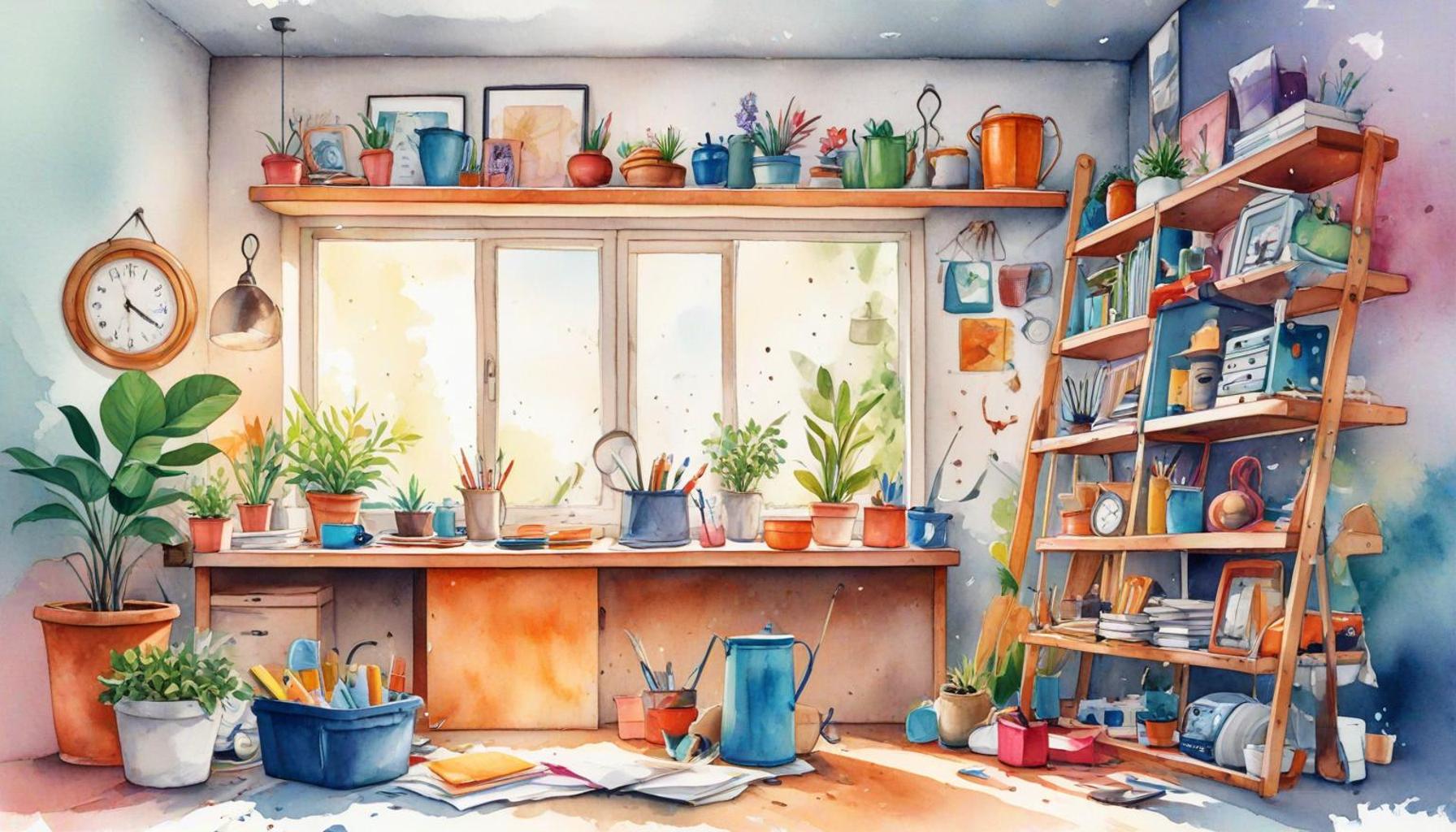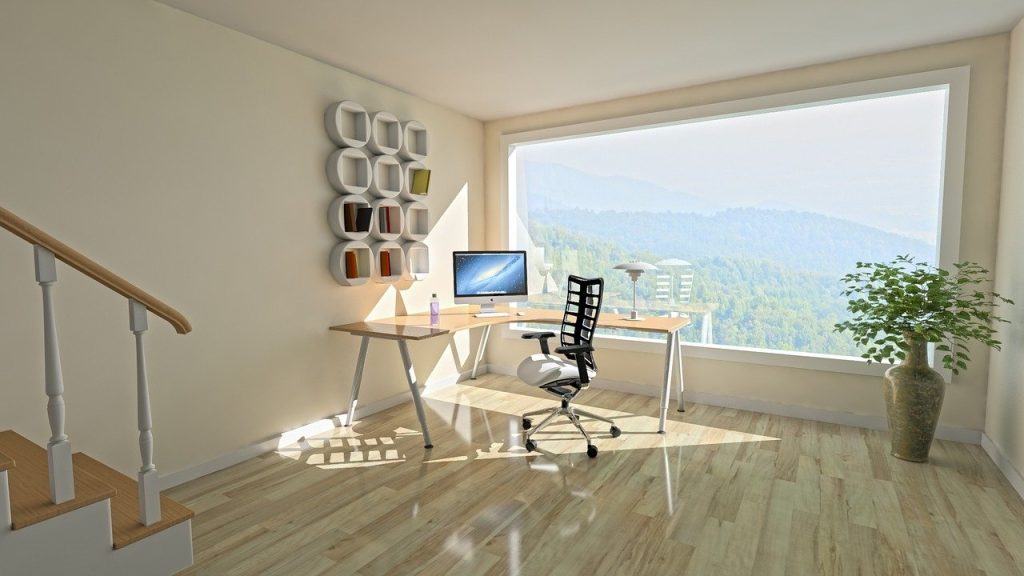Effective Strategies to Keep Your Daily Space Clutter-Free

In today’s fast-paced world, maintaining a clutter-free environment can feel overwhelming. The principles of minimalism advocate for a simplified lifestyle, emphasizing the value of less over more. By adopting effective organization strategies, we can create spaces that promote clarity, focus, and tranquility.
The relevance of personal organization stretches beyond aesthetics; it has profound effects on our mental well-being and productivity. A tidy living environment reflects inner peace and allows us to concentrate on what truly matters. As clutter accumulates, so too does distraction, urging us to think critically about how we can streamline our daily lives.
In this article, we will explore the Top 5 effective strategies that can help you achieve a clean and harmonious space. From establishing daily routines to mindful decluttering, each tactic will equip you with the tools needed to reclaim your environment and enhance your overall quality of life.
DISCOVER MORE: Click here to learn how minimalism can transform your life
Top 5 Effective Strategies to Maintain a Clutter-Free Environment Daily
In today’s fast-paced world, maintaining a clutter-free environment can feel daunting. Clutter isn’t just physical mess; it’s also a mental hurdle that can impact our productivity, mood, and overall well-being. However, with the right strategies, you can transform your space into an oasis of calm and efficiency. Below, we explore the top five effective strategies for keeping your surroundings orderly, freeing yourself from the chaos of clutter, and discovering new efficiencies in your daily life.

5. Implement the “One In, One Out” Rule
The “One In, One Out” rule is a cornerstone of minimalism and sustainable living. Its brilliance lies in its simplicity: ensure that for every new item you bring into your home, an existing item must depart. This not only helps manage the influx of possessions but also fosters a culture of intentional buying and mindfulness.
Consider your needs before buying—do you really need that new shirt or gadget? In a consumer-driven society, distinguishing between wants and needs is crucial to preventing unnecessary clutter. Pause and reflect if the new item will truly add value to your life.
Evaluate the items you already own and assess their value to your life. Regular evaluations encourage letting go of items that no longer serve you. This not only applies to physical possessions but can also apply to digital clutter such as old emails and files.
By actively applying this principle, you’ll gradually notice a significant reduction in clutter while developing a more mindful purchasing habit. An environment free from excess not only provides more physical space but also promotes a sense of control and serenity.
4. Establish a Daily Clean-Up Routine
Routines provide structure in our lives, and a daily clean-up routine can seamlessly integrate tidiness into your lifestyle. Scientific studies have shown that people who maintain organized spaces experience less stress and increased productivity.
Dedicate 10-15 minutes at the end of your day for cleaning. This short, manageable time frame ensures that tidying up doesn’t become overwhelming, reducing feelings of being perpetually behind on chores.
Focus on high-traffic areas where clutter tends to accumulate. Concentrating efforts on spaces like kitchens and living rooms where mess builds up quickly makes a noticeable impact. Small daily acts of organization compound over time, preventing clutter from snowballing into a major issue.
This daily habit solidifies organization as part of your lifestyle, making it easier to keep your environment pristine over time. Remember, consistency is crucial in reducing clutter build-up.
3. Designate Specific Spaces for Items
A place for everything and everything in its place—this age-old adage forms the backbone of organizational success. Assigning specific spaces for items prevents the common mistake of randomly stashing them, which leads to disorganization.
Create a “drop zone” near the entrance for items like backpacks and shoes. This not only keeps entryways clear but also ensures essentials are easily accessible, streamlining exit and entry routines.
Utilize storage solutions such as baskets or drawer organizers to keep smaller items together. Modern storage solutions cater to all space constraints, from under-the-bed storage to modular shelving units that suit unique home layouts. These tools maximize efficiency and add an aesthetic appeal.
This simple strategy significantly enhances visibility and accessibility, fostering a more functional environment that mirrors the principles of minimalism you value.
2. Declutter Regularly with the 30-Day Minimalism Game
Embarking on a decluttering journey can seem intimidating, but the 30-Day Minimalism Game breaks it into manageable parts by turning decluttering into an engaging challenge. The game starts with small daily tasks that increase gradually, helping to instill sustainable practices.
Set a timer for 15 minutes daily for decluttering to make it achievable. Time constraints prevent the process from becoming overwhelming and help maintain focus during the activity.
Engage family or friends to join you in the challenge for added accountability. Sharing progress motivates participants and may spark creativity in tackling particularly stubborn areas of clutter.
The gamification of decluttering transforms a mundane task into a rewarding challenge, quickly filling your space with a sense of lightness and harmony while embedding minimalist values at home.
1. Embrace Minimalism’s Core Principles
At the pinnacle of maintaining a clutter-free environment is embracing minimalism’s core principles. This philosophy advocates for a conscious choice of living with less, which directly correlates with a more organized life. At its heart lies introspection and prioritization.
Identify your top priorities—focus on what genuinely matters. Discern between items that add genuine value versus transient desires. This process is crucial in protecting your space from returning to a cluttered state.
Consider quality over quantity; invest in fewer high-quality items instead of numerous low-quality ones. Well-crafted items offer longevity, ensuring your surroundings reflect intentionality and craftsmanship.
By adopting a minimalist mindset, clutter becomes less of a temptation, and you cultivate a lifestyle filled with intention and peace. This transformative approach not only affects your living space but also enhances mental clarity and focus, enabling you to approach tasks with renewed enthusiasm.
In conclusion, achieving a clutter-free environment is a journey rather than a destination. Incorporating these five effective strategies into your daily routine will significantly contribute to a more organized and harmonious space. Explore these concepts further, and discover how minimalism can significantly enhance your life, not just in the home but in developing a tranquil mindset.
| Category | Description |
|---|---|
| Decluttering Strategies | Utilizing the ‘Four-Box Method’ allows individuals to categorize their items into keep, donate, recycle, or trash, providing a structured approach to decluttering. |
| Introducing Storage Solutions | Investing in modular shelving and storage bins can help maximize space and ensure that every item has a designated place, reducing chaos. |
| Daily Maintenance Routines | Establishing a 10-minute tidy-up each day can create a habit of maintenance, making decluttering less of a daunting task over time. |
| Mindset Changes | Adopting a minimalist mindset encourages people to regularly evaluate their possessions, fostering a culture of intentionality around what to keep. |
Creating an organized environment is not merely about tidiness but significantly impacts mental well-being. The strategies outlined in this table can serve as a blueprint not only for maintaining order but also for enhancing productivity and reducing stress. Individuals may find that each of these categories provides opportunities for personal growth and improved lifestyle choices.
DISCOVER MORE: Click here for a fresh start
Frequently Asked Questions about Maintaining a Clutter-Free Environment
What are some quick tips to start decluttering my home?
Beginning the journey to a clutter-free home can be intimidating, but starting small can make it manageable. Try implementing the “one-in, one-out” rule: every time you bring in a new item, remove one in exchange. Additionally, tackle one room or even one section of a room at a time to avoid feeling overwhelmed. Consistency is key, so set aside a few minutes each day to assess and organize your space.
How can I keep myself motivated to maintain a clutter-free environment?
Motivation can be fueled by visualizing the end result: a serene and tidy home. Create a habit loop by associating decluttering with enjoyable activities, like listening to music or rewarding yourself after a declutter session. Keeping a clear vision board of your ideal space can also serve as a constant reminder of your goal and sustain motivation.
Why is it important to maintain a clutter-free space?
A clutter-free environment is not just about aesthetics; it significantly affects your well-being. Research suggests that physical clutter can lead to increased stress and decreased productivity. By maintaining a tidy space, you create an atmosphere that fosters mental clarity and relaxation, both of which are crucial for personal happiness and efficiency.
Are there any psychological benefits to decluttering?
Yes, there are several psychological benefits linked to decluttering. It can lead to a sense of empowerment and control over your environment, directly impacting your mood and mental state. Decluttering is a way to practice mindfulness, offering you a chance to focus and reflect. Furthermore, a study found that individuals with organized homes experience less anxiety and better sleep patterns compared to those surrounded by chaos.
How can I involve my family in maintaining a decluttered home?
Incorporating family members into the decluttering process is essential for lasting changes. Assign age-appropriate tasks to younger ones to make organizing fun, perhaps turning it into a game. For older family members, establish regular family meetings to discuss organization strategies and celebrate small victories together. Encouraging everyone to take part ensures a collective responsibility towards maintaining a calm and orderly home environment.
DIVE DEEPER: Click here to simplify your online routine
Conclusion
In today’s fast-paced world, maintaining a clutter-free environment is more vital than ever. This article emphasized the significance of adopting effective strategies to declutter and organize personal and shared spaces. The journey toward minimalism and personal organization begins with understanding the impact of clutter on our mental well-being and productivity.
By highlighting the top five strategies, we explored how setting consistent routines, such as daily tidying habits, can quickly transform a space. Incorporating the one-in-one-out rule ensures that we remain conscious of the items we introduce into our homes, preventing future clutter buildup. The importance of digital decluttering is another key takeaway, as the virtual world can be as chaotic as the physical one, impacting efficiency and focus.
The article also delved into the psychological advantages of a simplified environment, underscoring how intentional organization fosters a sense of calm and enhances decision-making capabilities. By prioritizing essential items and letting go of what no longer serves us, we can truly embrace the minimalist philosophy.
Ultimately, the pursuit of a clutter-free environment is a continuous process, demanding mindfulness and commitment. It offers a pathway not only to tidier living spaces but also to a more serene and focused life. As readers consider these strategies, they’re invited to embark on a journey toward a more deliberate lifestyle, where simplicity reigns, and true value is discovered in less. By adopting these approaches, individuals can reclaim their living spaces and, in turn, their peace of mind, paving the way for a rewarding minimalist lifestyle.
Related posts:
Demystifying Minimalism: How Fewer Items Can Lead to More Personal Freedom
Transforming Spaces: Organization Projects that Reduce Clutter and Increase Functionality at Home
Boost Mental Wellness The Impact of Reducing Clutter on Health
Clutter and Social Connections: How Reducing Clutter Can Improve Your Relationships and Social Life
How to Create an Efficient Organization System: Steps to Reduce Clutter in Daily Life
The Journey of Detachment: How Reducing Clutter Can Be an Emotional Process

Linda Carter is a writer and organization expert specializing in minimalism and personal organization. With extensive experience helping individuals create clutter-free, functional spaces and adopt mindful habits, Linda shares her knowledge on our platform. Her goal is to empower readers with practical advice and strategies to simplify their lives, stay organized, and achieve a sense of calm and balance in their daily routines.